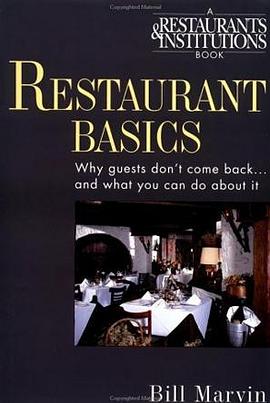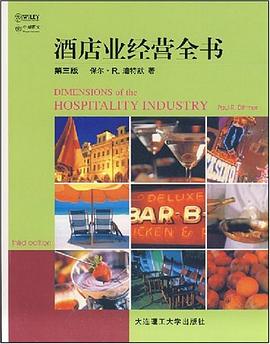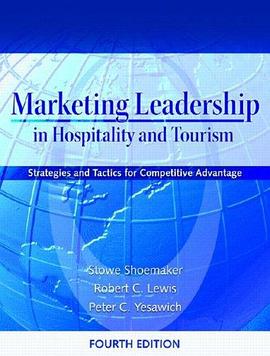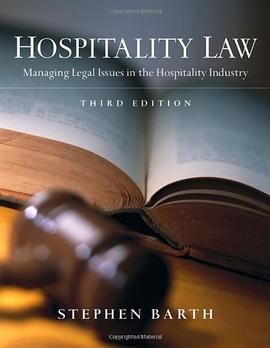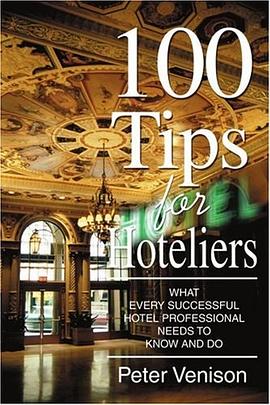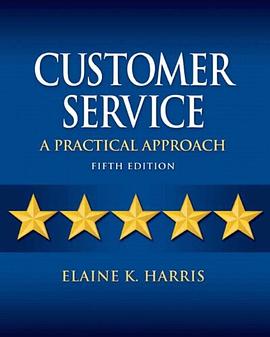

Hospitality management is an exciting professional discipline offering numerous career opportunities. Introduction to Hospitality Management is a comprehensive tour of the fascinating and challenging fields of the hospitality industry: travel and tourism, lodging, foodservice, meetings, conventions and expositions, leisure and recreation. Introduction to Hospitality Management has been written in response to requests from educators who wanted the addition of chapters on hospitality management. The new management and hospitality information technology chapters (Chapters 14 through 20) focus on what hospitality managers actually do and the most important challenges facing industry leaders today and tomorrow. The topics include leadership and management, planning, organizing, communicating and decision making, motivating, controlling, and hospitality information technology. Post 9-11 security focus boxes, written by experts in this field, present the most up-to-date information pertinent to security in the hospitality industry. This text is designed for the hospitality management professionals of tomorrow. By involving readers in each step of this exciting journey, Introduction to Hospitality Management invites students to share the unique enthusiasm surrounding the hospitality industry. Each chapter has been vetted by industry professionals and includes several hands-on examples, which help students understand the how-to aspects of the hospitality industry. The features of Introduction to Hospitality include: Chapter objectives that help the reader focus on the main points discussed in the chapter Bold key words and concepts that help the reader internalize the various topics presented in the chapter Contributing authors who bring their expertise to each chapter Personal Profiles of industry practitioners that describe the careers of a number of hospitality industry leaders, including Valerie Ferguson, past chair of the American Hotel and Motel Association and regional vice president of Loews Hotels; August Escoffier; Rich Melman; Chef Paul Prudhomme; Norman Brinker; Ruth Fertel; Reg Washington; Robert Mondavi; and Steve Wynn Day in the Life O f features that describe the daily activities of several hospitality professionals, from chefs to cruise directors to guest services managers and convention center sales managers. Each explains the key functions of their job Corporate Profiles that give an overview of leading corporations of excellence including Hyatt Hotels, Marriott International, Outback Steakhouse, Red Lobster, T.G.I. Friday's, Disney, Las Vegas Convention and Visitors Authority, ARAMARK, Starbucks Coffee Company, Four Seasons Regent Hotels, Canadian Pacific Hotels, Club Med, and Cendant Hotels Career Information boxes that give a description of career opportunities along with a listing of related web sites Check Your Knowledge in-text features that encourage students to ask questions relevant to the material covered every few pages Industry experts sidebars Thorough identification and analysis of trends, issues, and challenges that will have a significant impact on hospitality in the future Scope of coverage and the international perspective on present and future industry issues Presentation and description of numerous career opportunities in hospitality Summaries that correspond to the chapter learning objectives SCANS (Secretary's Commission on Achieving Necessary Skills) related critical thinking review questions that review important aspects of the text. They differ from the Check Your Knowledge and Apply Your Knowledge questions Case studies that challenge students to address real-world situations and recommend appropriate action Internet exercises that invite students to "surf the Net" to answer specific, relevant hospitality questions Apply Your Knowledge questions that offer students the chance to apply their knowledge of hospitality industry topics A glossary that explains the meaning of special words throughout the text The extensive supplement package includes the following: An Instructors Manual A computerized test bank of class-tested multiple-choice questions that may be modified to suit individual faculty needs A PowerPoint presentation A free two-hour video featuring corporations of excellence A Student Study Guide A Companion Website with web-based activities for each chapter reinforcing material and offering self-tests and other materials, located at [A HREF="http://www.prenhall.com/walker"> http://www.prenhall.com/walker . This wide variety of learning tools provides a fundamental learning aid to students and encourages their active participation in the course. Please go online to Prentice Hall.com or call your local representative, contact information for whom may also be found on the Prentice Hall Website, http://www.prenhall.com. Features of the Chapters Chapter 1 Welcome to the wonderful world of hospitality. This chapter, "Introduction," provides an overview of hospitality industry characteristics; corporate philosophy; mission, goals and objectives/strategies; service, TQM and companies that strive for excellence. Chapter 2 "Tourism" outlines the scope of tourism and identifies the major influences on the increase in tourism, the various travel modes, and the key organizations and the role they play from a local to a global perspective. Chapter 3 "The Hotel Business: Development and Classification" illustrates the various forms of hotel development, the different types of hotels, their classification and ways to cater to the business and leisure travel markets. Chapter 4 "Hotel and Rooms Division Operation" provides a hands-on perspective that details the rooms division department functions and activities. A complete overview of the guest cycle from reservations to checkout is included. The chapter also outlines the duties and responsibilities of key executives and department heads. Chapter 5 "Hotel Operations: Food and Beverage Division" details the food and beverage departments and illustrates the duties and responsibilities of the key food and beverage executives. Chapter 6 "The Restaurant Business: Culinary Arts, Development and Classification" discusses culinary arts and traces the history and development of the restaurant business. Restaurant development from operating philosophy and mission statements to market, concepts, location, ambiance, menu planning, and classification are discussed. Chapter 7 "Restaurant Operations" focuses on the operations of a restaurant. The chapter discusses forecasting, purchasing, receiving, storage/issuing, food production and service. Budgeting, controllable expenses, restaurant accounting, operating ratios, and controls are also discussed. Chapter 8 "Managed Services" outlines the different foodservice segments and describes the factors that distinguish managed services. Characteristics and trends in airline, military, elementary and secondary schools, colleges and universities, health care, business and industry foodservice are illustrated. Chapter 9 "Beverages" presents the various types of wines and wine making, beer and the brewing process, spirits, nonalcoholic beverages, bars, beverage management, and liquor liability and the law. Chapter 10 "Recreation and Leisure" introduces recreation, leisure and wellness as essential to our cultural, moral, and spiritual well-being. Government-sponsored recreation, national parks, and public recreation agencies are illustrated together with commercial recreation/theme parks and clubs. Noncommercial recreation in the form of voluntary organizations, campus, armed forces, employee recreation, and recreation for special populations is discussed. Chapter 11 "The Gaming Entertainment Industry" reviews the history of gaming entertainment and examines the size and scope of the industry. The key players are identified and exciting entertainment projects are discussed together with careers and the relationship of the gaming industry to hotels, food and beverage, casino, and retail operations. Chapter 12 "Meetings, Conventions, and Expositions" introduces readers to the different types of meetings, conventions, and expositions. Meeting planners, convention and visitor's bureaus, event management, and specialized services are also covered in detail. Chapter 13 "Marketing and Human Resources" presents the elements of marketing, sales and human resources that are common to all segments of the hospitality industry. Chapter 14 "Leadership and Management" offers an overview of the characteristics and attributes of leaders and compares different leadership styles. Hospitality leaders such as Herb Kelleher, Chairman of Southwest Airlines; Ray Kroc, founder of McDonalds; Bill Fisher, former president and CEO of the American Hotel and Lodging Association, and currently Darden Chair at the University of Central Florida; Isadore Sharp, Chairman of Four Seasons Hotels and Resorts; Van E. Eure, President of The Angus Barn Restaurant, offer their insights into successful leadership. Carlson Companies is featured and profiled as a corporation of excellence. The functions of management are detailed, and the distinction between leadership and management is made. What managers do is also covered and the three levels of management are introduced. Ethics and ethical managerial behavior are discussed. Chapter 15 "Planning" describes the importance of planning, discusses the merits of the different types of plans, and identifies the seven steps in operational planning. Strategic planning and strategic management are discussed; and strengths, weaknesses, opportunities and threats (SWOT) analysis is introduced. The process of setting goals and objectives is explained. Operational planning is detailed in seven steps. Benchmarking and policies and procedures are reviewed. Budgets and goal setting are illustrated. Chapter 16 "Organizing" presents the purpose of organizing, how organizing is achieved, and organizational structure. Organizational design and teamwork are introduced. Numerous industry examples help explain the concepts. Chapter ...
具体描述
读后感
用户评价
相关图书
本站所有内容均为互联网搜索引擎提供的公开搜索信息,本站不存储任何数据与内容,任何内容与数据均与本站无关,如有需要请联系相关搜索引擎包括但不限于百度,google,bing,sogou 等
© 2025 onlinetoolsland.com All Rights Reserved. 本本书屋 版权所有

